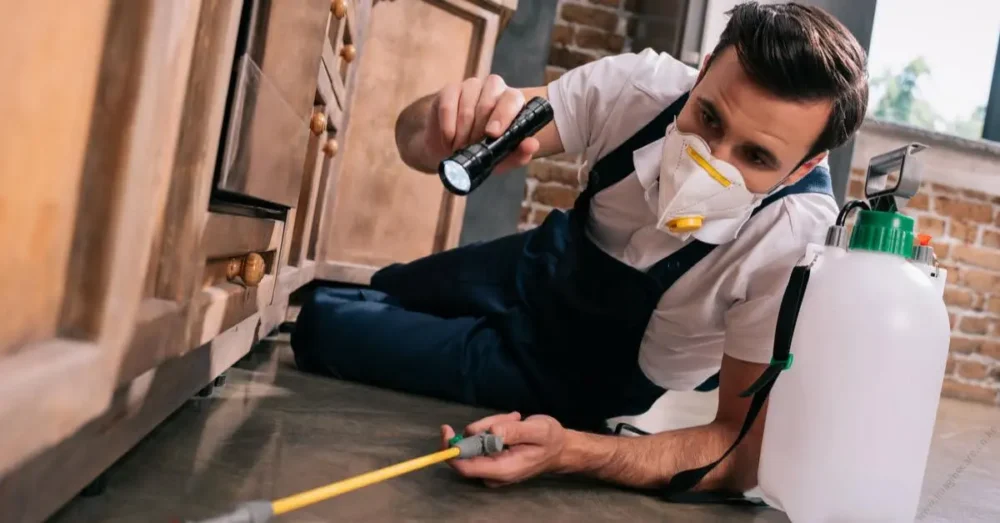The importance of maintaining a pest-free environment in business operations cannot be overstated. Irrespective of the nature or size of your business, pests, whether they are rodents, bugs, or insects, can create significant issues ranging from health risks to damaged inventory, and even customer discomfort. Pests can disrupt your serene business setting and pose serious threats to the health and reputation of your business. With that in mind, it becomes essential to map out steps to establish and sustain a pest-free environment in your business.
Conduct a Pest Risk Assessment

Source: cabi.org
Understanding your risk level is the first step in the long battle against pests. This understanding comes from a comprehensive pest risk assessment – an activity that brings you face-to-face with potential threats and vulnerabilities. Pest risk assessment is not just about inspecting your premises, but it also involves identifying the possible species of vermin you’re dealing with, understanding their habits and life cycles, and analyzing the unique risk factors that your business might present.
The advantages of early detection and preventive measures are manifold. A penny invested in prevention can save a pound used in the cure – this holds especially true in the context of pest control. Prevention of an infestation is typically less costly and less time-consuming than fighting an infestation that has already taken root. Regular assessments can help identify signs of pest activity early on, thereby allowing for timely intervention before the situation escalates.
Maintain Cleanliness and Hygiene
Maintaining cleanliness and hygiene acts as the primary line of defense against pests. Instituting regular cleaning routines within your organization is a must to ward off these unwelcome guests. One of the most fundamental aspects of such cleaning routines is effective trash disposal and sanitation practices. All the trash bins should be regularly emptied and cleaned, and leftovers, particularly food scraps, should never be left out in the open.
The role of employees in this context is extremely critical. It’s not enough that the cleaning staff alone is aware of the importance of cleanliness and hygiene in preventing them. All employees should be educated and made aware of their responsibilities in maintaining the cleanliness of their respective workspaces. Establishing and enforcing cleanliness policies across the board will go a long way in preventing pest-related issues.
Seal Entry Points
Pests, like most creatures, look for the path of least resistance when invading your business premises. They tend to slip through small cracks, gaps, and holes, transforming your business space into their home. This makes it crucial for you to regularly inspect your building for such potential entry points and seal them without delay. Various materials like weatherstripping, caulk, and others can be used to effectively seal gaps and cracks around doors, windows, and places where utility lines enter your business premises.
Proper Food Storage and Waste Management

Source: terminix.com
Food acts as a magnet for pests. Therefore, proper food storage plays a pivotal role in vermin control. Keep food items in sealed containers and store them in places where vermin can’t reach. This is especially true for businesses involved in the food and beverage industry.
Similarly, adopting effective waste management practices can dramatically reduce the appeal of your business premises to pests. This involves using sealed garbage bins and ensuring regular trash pickup. Regular cleaning of the bins is also crucial to prevent any attraction.
Regular Inspection and Monitoring
Regular inspections act as an early warning system to detect pest activity. Businesses can employ different methods, such as traps and baits, to monitor any activity within the premises. Developing a schedule for routine inspections is crucial for early detection and action. Also, involving employees in spotting signs of pest activity can add another layer to your business’s defense system.
Implement Integrated Pest Management (IPM) Techniques
Integrated Pest Management (IPM) techniques present an effective way to combat vermin infestation. It’s not just a standalone technique but a comprehensive approach that combines prevention, monitoring, and targeted treatments to manage pests. IPM stands out as an effective and environmentally sensitive approach to its management. It’s based on a deep understanding of the pest’s life cycle and its interaction with the environment.
Educate Employees
Keeping your business premises pest-free is not a job for one person or one department. It’s a collective responsibility. Educating employees within commercial pest control businesses about pest prevention becomes extremely crucial. Regular training sessions can be conducted to raise awareness and impart best practices to employees. They should be encouraged to report any signs of pest activity immediately, reinforcing the idea that everyone has a role to play in maintaining a pest-free environment.
Work with Professional Pest Control Services

Source: imaginecare.co.ke
Despite all your efforts and precautions, there might be situations where professional help becomes necessary. It could be a severe infestation that’s beyond the capabilities of your in-house team, or you might simply need expert advice on your pest control strategy. Professional vermin control services bring to the table their extensive experience and comprehensive solutions for all types of pest problems. Having a reliable control provider on speed dial can be invaluable for businesses. They not only help tackle existing infestations but can also provide regular service to keep future invasions at bay.
Implement Natural Control Methods
In the era of sustainable and eco-friendly business practices, natural pest control methods offer an attractive alternative. Natural remedies like essential oils, botanical-based repellents, etc., can deter pests effectively. However, it’s important to understand their limitations and proper usage to ensure they are effective.
Maintain Exterior Landscape
The exterior landscape of your business premises can either invite or deter pests. A well-maintained landscape with no overgrown vegetation or standing water can significantly reduce the likelihood of pests making your premises their home. Regular landscape maintenance becomes a non-negotiable aspect of your vermin management strategy in this regard.
Review and Update Pest Prevention Strategies

Source: grainger.com
The field of pest control is not static. It’s constantly evolving with advancements in vermin control technologies and best practices. Therefore, it becomes essential for businesses to regularly review and update their prevention strategies. Staying informed about new threats and industry advancements is crucial to ensuring your pest control strategies remain effective and up-to-date.
Bottom Line
Maintaining a pest-free environment is a vital aspect of running a successful business. The steps outlined above provide a comprehensive approach to its management, equipping businesses to create a clean, safe, and welcoming environment. Prevention is always better than cure, especially when it comes to pests. So, take the first step today towards making your business a no-go zone for pests!
















